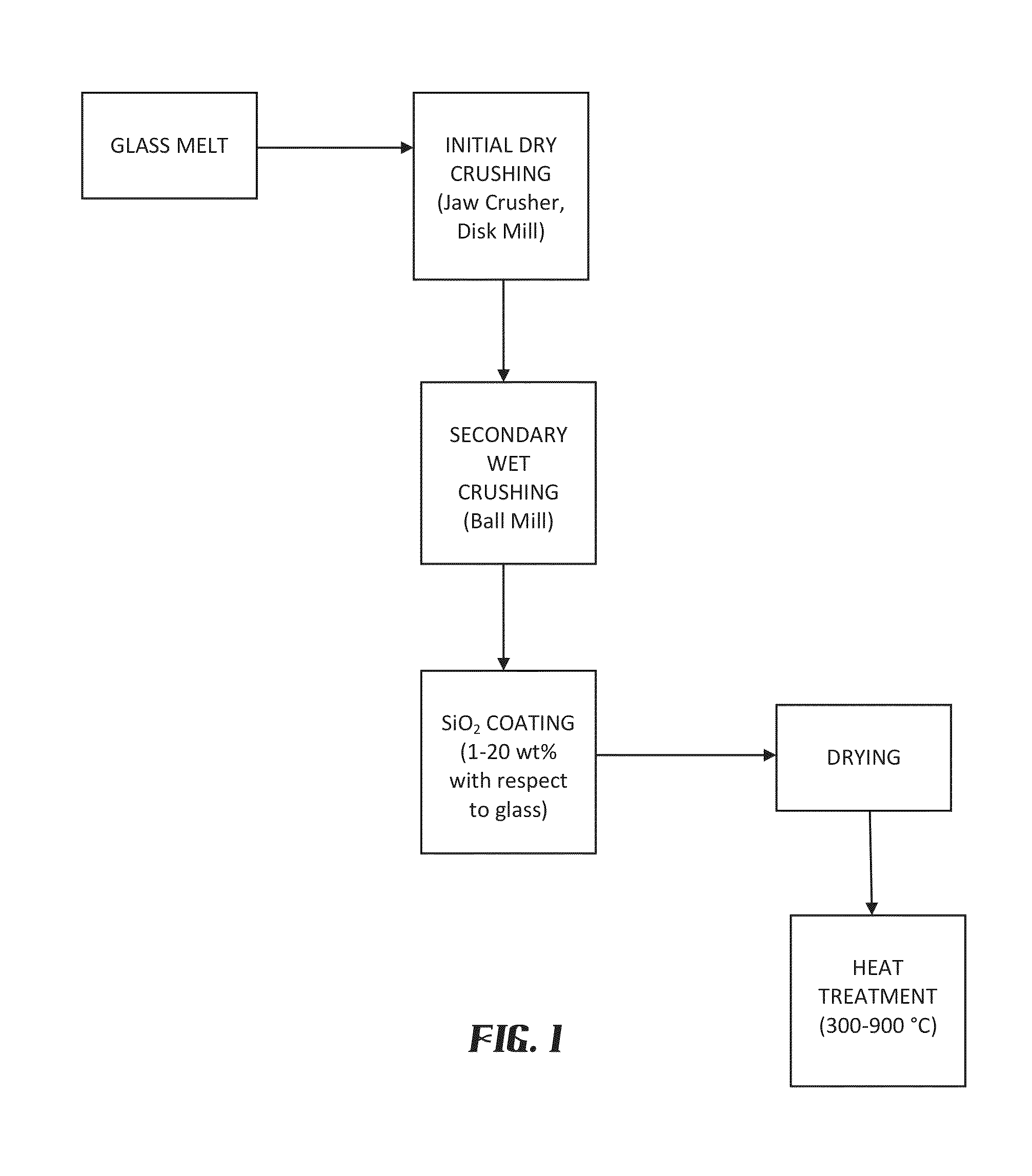Glass Fillers Having Acid Resistance
a glass filler and acid resistance technology, applied in the field of glass fillers, can solve the problems of hardening of the cement product itself, difficult to ensure the uniformity of the glass melt, and inability to ensure the hardness of the cement product, so as to avoid disadvantages and shortcomings
- Summary
- Abstract
- Description
- Claims
- Application Information
AI Technical Summary
Benefits of technology
Problems solved by technology
Method used
Image
Examples
Embodiment Construction
[0018]While this invention is susceptible of embodiments in many different forms, there is shown in the drawings and will herein be described in detail at least one preferred embodiment of the invention with the understanding that the present disclosure is to be considered as an exemplification of the principles of the invention and is not intended to limit the broad aspect of the invention to any of the specific embodiments illustrated.
[0019]Specifically, in the hardening tools based on acid / base reactions in dental composite and dental cement products, there has been no choice but to use a silica glass filler, which lacks radiopacity. The use of barium glass filler or strontium glass filler, which both have radiopacity, make it very difficult to ensure the stability of the dental composite or dental cement product. The product instability is a result of the hardening reaction taking place due to barium ions or strontium ions being produced by the elution of the barium component or...
PUM
| Property | Measurement | Unit |
|---|---|---|
| thickness | aaaaa | aaaaa |
| temperature | aaaaa | aaaaa |
| temperature | aaaaa | aaaaa |
Abstract
Description
Claims
Application Information
 Login to View More
Login to View More - R&D
- Intellectual Property
- Life Sciences
- Materials
- Tech Scout
- Unparalleled Data Quality
- Higher Quality Content
- 60% Fewer Hallucinations
Browse by: Latest US Patents, China's latest patents, Technical Efficacy Thesaurus, Application Domain, Technology Topic, Popular Technical Reports.
© 2025 PatSnap. All rights reserved.Legal|Privacy policy|Modern Slavery Act Transparency Statement|Sitemap|About US| Contact US: help@patsnap.com



